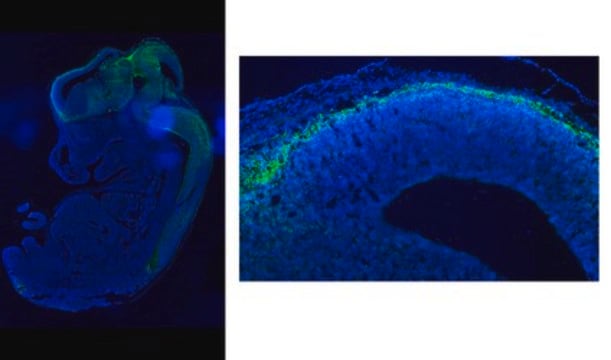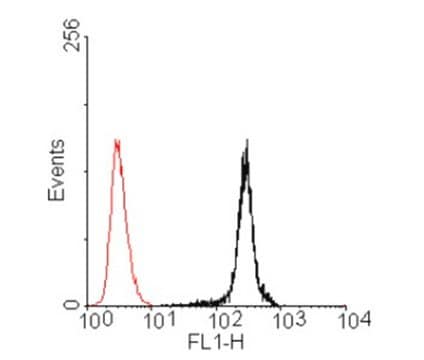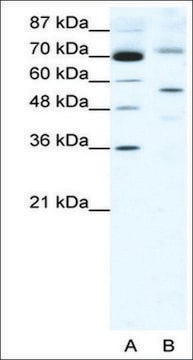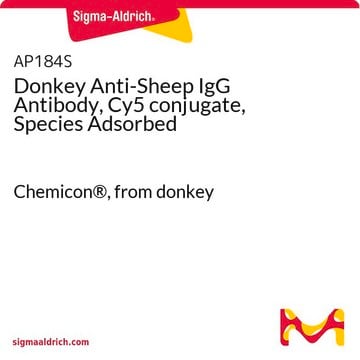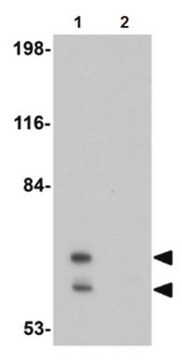ABT288
Anti-PICALM
from rabbit, purified by affinity chromatography
Sinonimo/i:
Phosphatidylinositol-binding clathrin assembly protein, Clathrin assembly lymphoid myeloid leukemia protein
About This Item
Prodotti consigliati
Origine biologica
rabbit
Livello qualitativo
Forma dell’anticorpo
affinity isolated antibody
Tipo di anticorpo
primary antibodies
Clone
polyclonal
Purificato mediante
affinity chromatography
Reattività contro le specie
human
Confezionamento
antibody small pack of 25 μL
tecniche
immunohistochemistry: suitable (paraffin)
western blot: suitable
N° accesso NCBI
N° accesso UniProt
Condizioni di spedizione
ambient
modifica post-traduzionali bersaglio
unmodified
Informazioni sul gene
human ... PICALM(8301)
Descrizione generale
Specificità
Immunogeno
Applicazioni
Cell Structure
Western Blotting Analysis: A 1:1,000 dilution from a representative lot detected PICALM in MOG-G-UVW human astrocytoma cell line (Courtesy of Dr Rhian Thomas from Cardiff University).
Western Blotting Analysis: A 1:1,000 dilution from a representative lot PICALM in Mog-G-UVW human astrocytoma cell lysate and HeLa cell lysate (Courtesy of Dr Rhian Thomas from Cardiff University).
Western Blotting Analysis: A 1:1,000 dilution from a representative lot detected PICALM in Human H4 neuroglioma cell lysate and SH-SY5Y neuroblastoma cell lysate (Courtesy of Dr Rhian Thomas from Cardiff University).
Immunohistochemistry Analysis: A 1:50-250 dilution from a representative lot detected PICALM in human colon and human kidney tissue sections.
Qualità
Western Blotting Analysis: A 1:500 dilution of this antibody detected PICALM in HeLa cell lysate.
Descrizione del bersaglio
Stato fisico
Stoccaggio e stabilità
Altre note
Esclusione di responsabilità
Not finding the right product?
Try our Motore di ricerca dei prodotti.
Codice della classe di stoccaggio
12 - Non Combustible Liquids
Classe di pericolosità dell'acqua (WGK)
WGK 1
Certificati d'analisi (COA)
Cerca il Certificati d'analisi (COA) digitando il numero di lotto/batch corrispondente. I numeri di lotto o di batch sono stampati sull'etichetta dei prodotti dopo la parola ‘Lotto’ o ‘Batch’.
Possiedi già questo prodotto?
I documenti relativi ai prodotti acquistati recentemente sono disponibili nell’Archivio dei documenti.
Il team dei nostri ricercatori vanta grande esperienza in tutte le aree della ricerca quali Life Science, scienza dei materiali, sintesi chimica, cromatografia, discipline analitiche, ecc..
Contatta l'Assistenza Tecnica.
